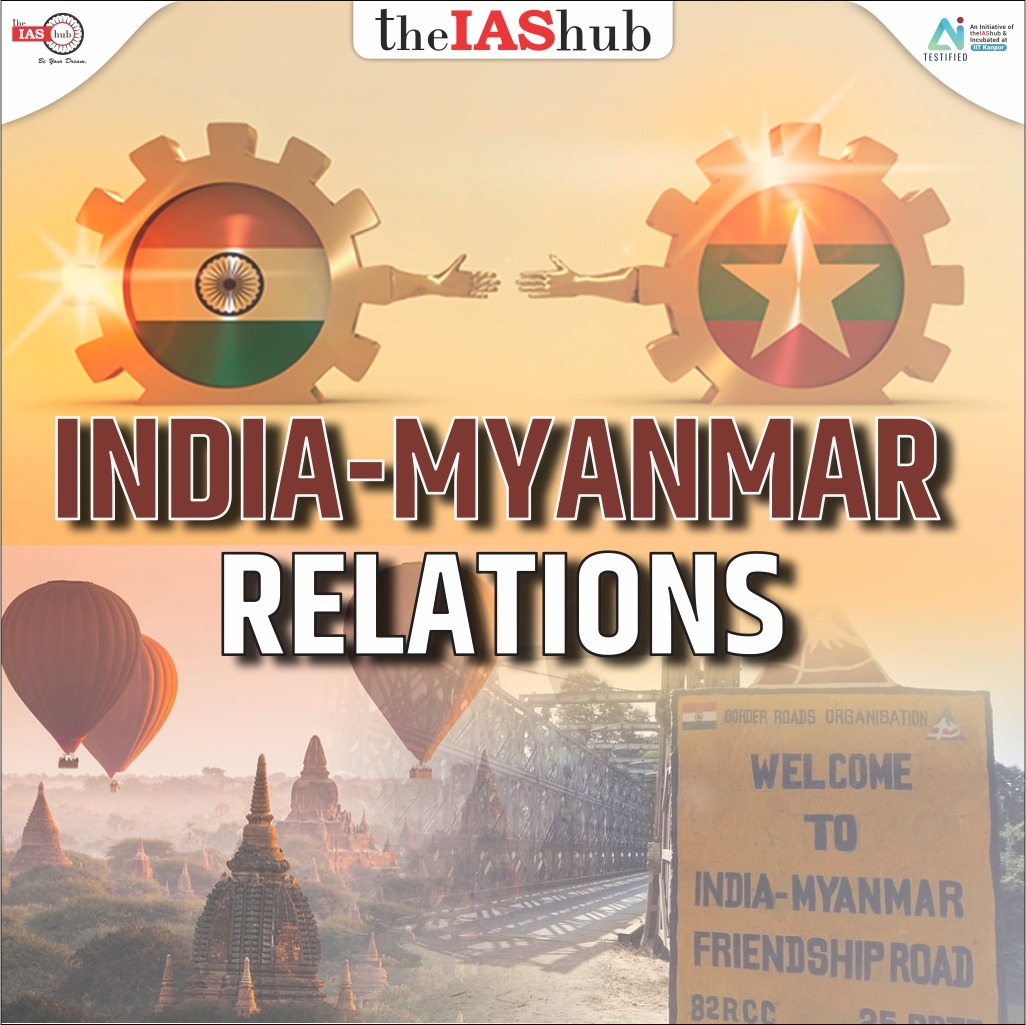India-Myanmar relations are rooted in shared historical, ethnic, cultural and religious ties. As the land of Lord Buddha, India is a country of pilgrimage for the people of Myanmar.


Introduction: India-Myanmar relations are rooted in shared historical, ethnic, cultural and religious ties. As the land of Lord Buddha, India is a country of pilgrimage for the people of Myanmar. The geographical proximity of the two countries has helped develop and sustain cordial relations and facilitated people-to-people contact. India and Myanmar share a long land border of over 1600 km and a maritime boundary in the Bay of Bengal.

Strategic Relations
Economic Relations
|
India-Myanmar Trade Relations
|
China factor in India’s ties
Impact of the Coup
Road to Democracy in Myanmar
Way Forward
Conclusion
While India strives for democratic reforms, it also recognizes the need to engage with the military to maintain stability and protect its own interests. The evolving dynamics in Myanmar and the region will require India to navigate carefully and balance its democratic ideals with pragmatic considerations.


Refine your answer writing skills and elevate your UPSC preparation with personalized support and expert feedback.
Fill out the form to get started with the program or any other enquiries !








Are you dreaming of becoming an IAS officer? Then, IAShub can be your best guide. It is one of the Best IAS Coaching in Delhi. Many students who want to clear the UPSC exam join IAShub for learning. The institute gives both online and offline classes. Their teachers are experienced and helpful. They easily explain every topic. Students also get notes, tests, and tips to do well in the exam.
IAShub is in Delhi and is trusted by many UPSC students. It offers coaching for every part of the UPSC exam – Prelims, Mains, and Interview. The classes are simple and easy to understand. The teachers are experts and guide students in the right way. IAShub is also known for its helpful notes, test series, and answer-writing practice. IAShub is the best coaching in Delhi and also gives UPSC Online Classes. This helps students from any place in India to learn. The online classes are live and also recorded. So, students can watch them anytime. These classes cover the full UPSC syllabus.
Here are some important services provided by IAShub:
The UPSC Civil Services Exam has three parts:
This exam is tough, but with the right guidance, it becomes easy to manage. Students must study smart and stay regular.
IAShub supports students from the beginning to the end. It gives the right books, tests, and notes. The classes are easy to follow, and the teachers are always ready to help. Students get personal doubt sessions too. The test series and answer checking help students learn where they need to do better. Also, free study materials save time and money.
IAShub also guides students during the final stage – the interview. Experts take mock interviews and give useful tips. This full support makes IAShub one of the best IAS coaching in Delhi.